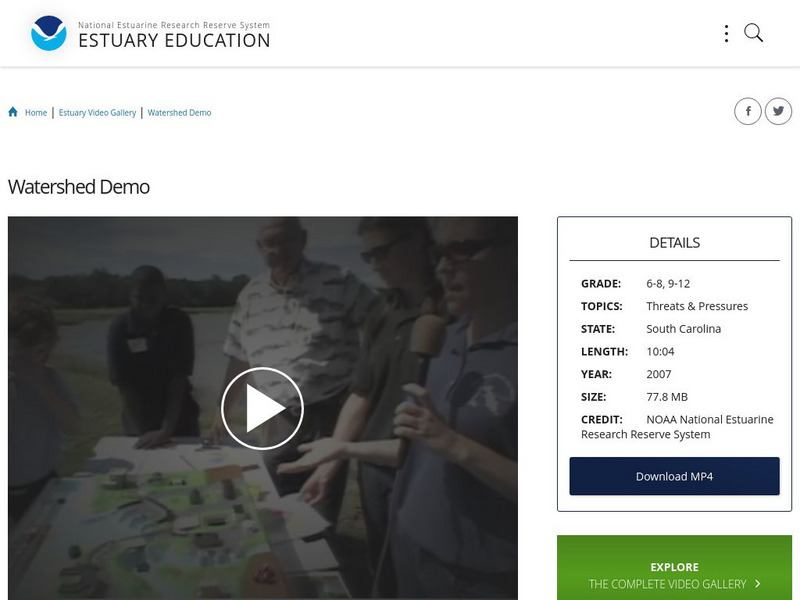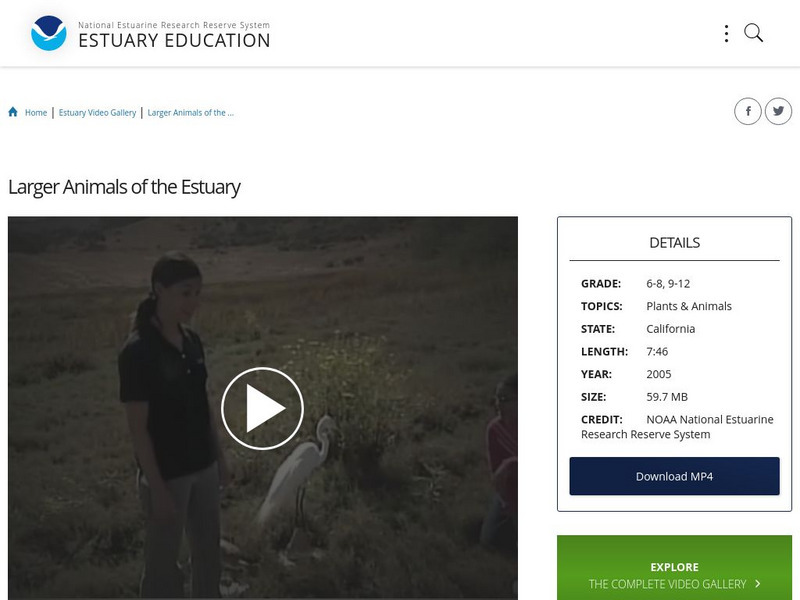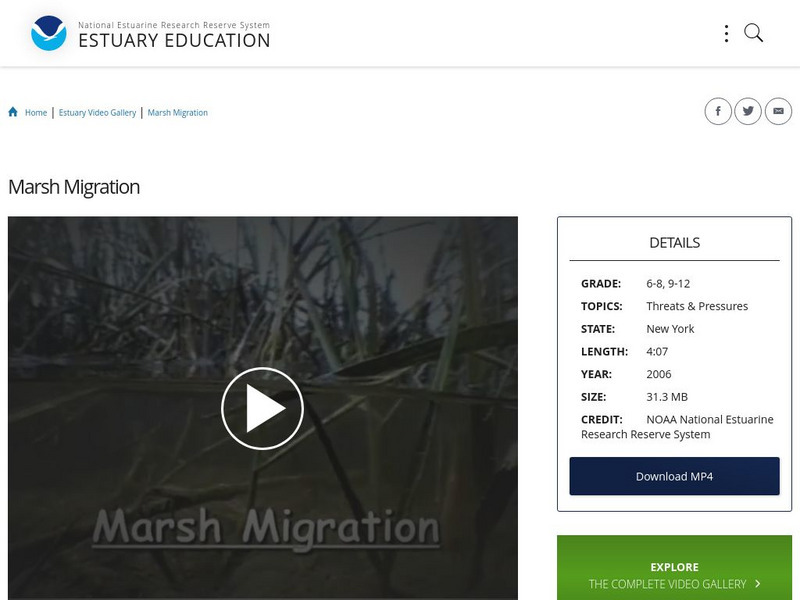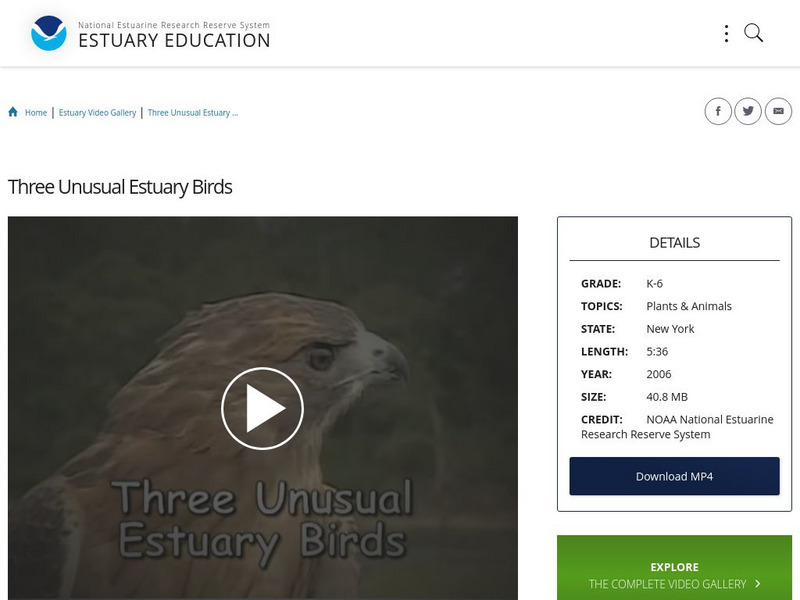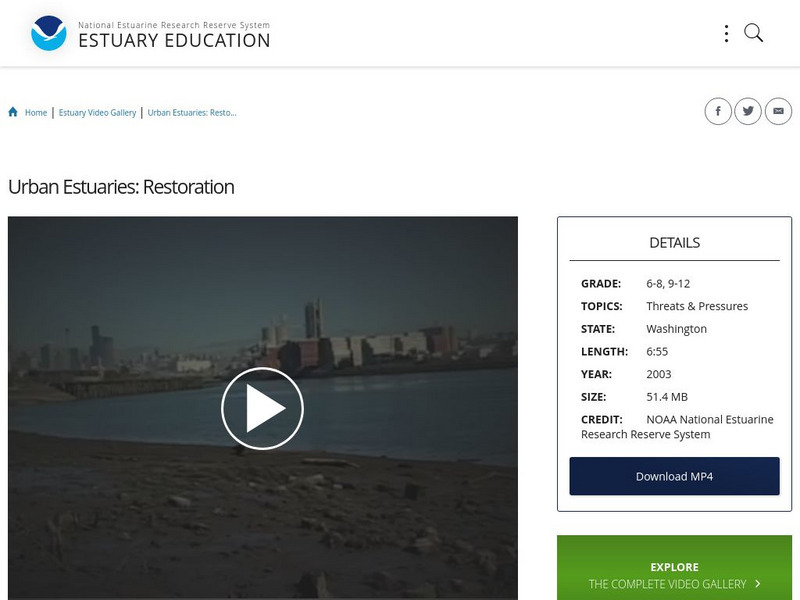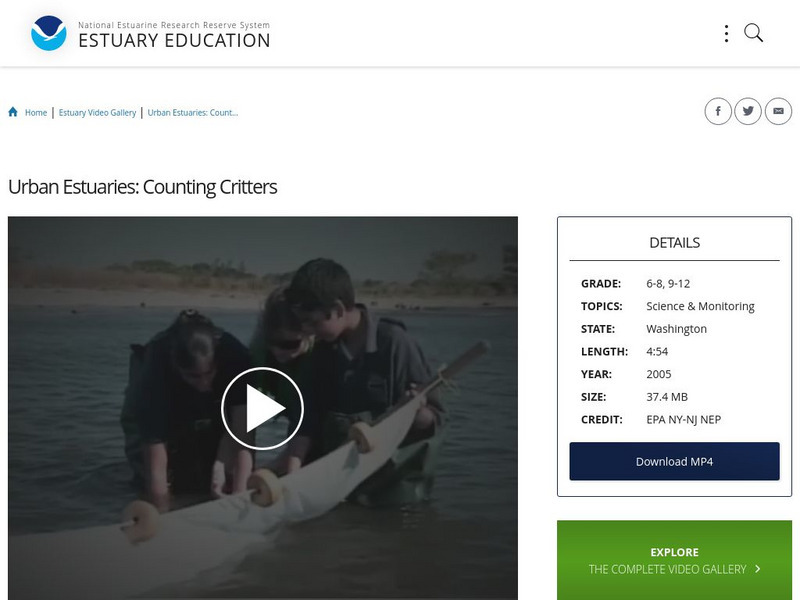Project Based Learning Teacher Resources
Find Project Based Learning lesson plans and worksheets
Showing 878 resources
American Geosciences Institute
American Geosciences Institute: Earth Science Week: Mystery Mollusc
Young scholars become marine biologists, and their goal is to characterize the biological communities that live on or near the seamount in the Monterey Bay area. There, they must identify a mystery mollusk.
NOAA
Noaa: Estuary Education: Urban Estuaries: Water Quality Testing
Students measure water quality in the NY-NJ Estuary using simple tools. Scientists explain the importance of good water quality and talk about what causes water quality declines. [5:44]
NOAA
Noaa: Estuary Education: Watershed Demo
A quick, by necessity, discussion of watersheds with a great demo using a very good watershed model (Enviroscape) plus a couple of student tips. [10:04]
NOAA
Noaa: Estuary Education: Plants (Circle of Life)
A segment from the film Waters of Life takes a look at the role of plants in the estuary, and the cycle of life that depends on them. [3:27]
NOAA
Noaa: Estuary Education: Hermit Crab Research
A young researcher studies how hermit crabs live and reproduce in the estuary. She also discusses the value of the Estuarine Research Reserve system. [4:57]
NOAA
Noaa: Estuary Education: Night in the Estuary
Come along on a night hike exploring the Rachel Carson Reserve in Beaufort, North Carolina. Duke University's Dan Rittshof, an expert on the estuarine environment, discusses the blue crab species. [4:22]
NOAA
Noaa: Estuary Education: To Be a Meteorologist
See an interview with a high school senior who wants to study to become a meteorologist. She is working with her local National Weather Service office to find out what she will need to do to realize her dream. [3:00]
NOAA
Noaa: Estuary Education: Horseshoe Crabs
A close-up look at the horseshoe crab, an ancient estuary animal. [10:14]
NOAA
Noaa: Estuary Education: Red Drum Data
Collecting data on the much-prized Red Drum fish using standard data collection techniques. [10:12]
NOAA
Noaa: Estuary Education: Research Vessel Tour
Take a tour of the research vessel, the RV Palmetto, and find out about life and work aboard a scientific research boat. [10:12]
NOAA
Noaa: Estuary Education: Tornado: View From the Past
Weather forecasting has advanced since this film was made (in about 1956). Compare forecasting methods shown in this film with modern techniques. Watch for a huge mistake in the way scientists thought about tornado safety fifty years...
NOAA
Noaa: Estuary Education: Estuary Scavenger Hunt
Follow this group of students through their scavenger hunt in the estuary. Take a look at the living and nonliving things that make this ecosystem a special place. [9:38]
NOAA
Noaa: Estuary Education: China Camp State Park
California's China Camp State Park is an important environmental and historic site which has a natural watershed along the shores of San Francisco Bay. Features in the estuary include an extensive intertidal salt marsh, meadow, and oak...
NOAA
Noaa: Estuary Education: Eelgrass Restoration
Take a look at the scientific efforts to reseed the valuable but shrinking eelgrass bed habitats in the estuarine ecosystem. [3:06]
NOAA
Noaa: Estuary Education: Larger Animals of the Estuary
Join a naturalist who studies the large animals and native birds found in the estuarine areas. Spend the day exploring the San Francisco Bay Estuary with this group of students. [7:46]
NOAA
Noaa: Estuary Education: Wetlands: A Cautionary Tale
High School students perform a short skit describing the fragile nature of estuaries, while others demonstrate the value of wetlands using a water table. [3:10]
NOAA
Noaa: Estuary Education: Marsh Migration
Dr. Alex Kolker shows high school students how a salt marsh can actually migrate across the landscape. He uses fresh core samples taken by students to demonstrate his points. [4:04]
NOAA
Noaa: Estuary Education: Three Unusual Estuary Birds
We know many birds make their homes in the estuary. Some are familiar to us but here are three species that are more elusive. We get a close-up view of a Barred Owl, a Red-Tailed Hawk, and an American Oyster Catcher. [5:34]
NOAA
Noaa: Estuary Education: Shellfish Nurseries
Shellfish are not only important to the health of the estuary but are also a valuable food source and cash crop. Scientists from the Nature Conservancy explain how, with care, shellfish can be raised in special shellfish nurseries and...
NOAA
Noaa: Estuary Education: Urban Estuaries: Home to Native Peoples
Find out how progress and expansion displace native peoples who have lived in harmony with the estuary for generations. [6:43]
NOAA
Noaa: Estuary Education: Urban Estuaries: Living in a Toxic Soup
Urban areas often expand around estuaries. Industrial development often leaves a legacy of pollution in these areas. This video looks at what kind of long-term pollution is found in the Duwamish estuary in Seattle, and how estuary life...
NOAA
Noaa: Estuary Education: Urban Estuaries: Restoration
Students and citizen groups seek to restore and reclaim damaged, changed, or polluted estuaries. [6:52]
NOAA
Noaa: Estuary Education: Urban Estuaries: Counting Critters
Students use a seine net to count marine life in the NY-NJ Estuary. Scientists explain why some animals thrive and others decline, why some fish can be eaten and some cannot. [4:50]
NOAA
Noaa: Estuary Education: Combined Sewer Overflow
A quick overview of how a combined sewer overflow system works, and why heavy rains can be bad for estuaries. [1:42]




